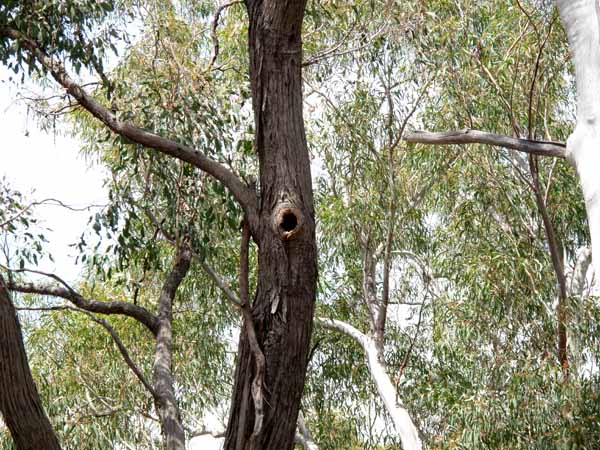Natural tree hollows provide refuge from the weather and predators, and safe sites for roosting and breeding. Destroying living or dead hollow-bearing trees displaces or kills wildlife dependent on those hollows.
Only old trees have usable hollows and if they die or are logged or cleared, it requires 100 or more years of growth, maturity and decay for them to be replaced. Termites are a major source of hollows, and they usually enter trees at points where fungi have initiated wood decay. Fire can contribute to the initial cause of damage and the creation of tree hollows. An intense fire or repeated burns can cause a shortage of hollows but can also assist in hollow formation.
Hollow formation is dependent on a tree’s history, its species and location. Generally, small hollows with narrow entrances, suitable for small animals such as the eastern pygmy-possum (Cercartetus nanus), take about 100 years to form. Medium sized hollows, suitable for possums and parrots, take around 200 years to form, and large, deep hollows, used by cockatoos (Calyptorhynchus lathami) and owls, can take a lot longer.
Most mature eucalypts have hollows,but gums and boxes have more hollows than stringybarks and ashes. Scribbly gum (Eucalyptus mannifera) and Yellow box (Eucalyptus melliodora) are typical ‘hotel’ trees, whereas many introduced species such as willows, pines and conifers do not produce hollows suitable for Australia wildlife.
Both vertebrate and invertebrate species use tree hollows.They include bats, possums, gliders, owls, parrots, kingfishers, dollar birds, ducks, raptors and antechinus as well as snakes, frogs and skinks.
Some introduced species – Indian Mynas, Starlings and European bees – compete with native wildlife for tree hollows. This reduces shelter, roosting and breeding sites for many native species.
If we want to conserve native wildlife in the ACT, it is essential to conserve our old trees, not only those in nature reserves, but also those on private land and even in the suburbs of our bush capital.
Reference
Gibbons, P. and Lindenmayer, D. B. 1997, Conserving Hollow-dependent Fauna in Timber-production Forests, Environmental Series Monograph Series No. 3, NSW National Parks and Wildlife Service, Sydney.

